According to Marjorie Elliot Bevlin, author of
Design through Discovery: The Elements of Design (my college design textbook from the 1980s), there are six
elements of design and seven
principles of design. Even though these design rules are universal, I find that I return to Bevlin's basic explanations time and again. They are especially helpful as I seek to understand what is considered good design and why it resonates with me.
So for the next few weeks, I'm going to use the many awesome landscape design projects on Houzz to explore each of the design principles and elements. This series will introduce one subject at a time and showcase the many ways each has become an iconic theme in the landscape.
First up: Rhythm,
a principleWebster's defines "rhythm" as "the patterned, recurring alterations of contrasting elements." The dynamic of rhythm creates a visual flow. As a beat is to music, as choreography is to dance, rhythm adds vitality to a garden. In landscape design, rhythm creates a physical sensation. It may cause people to move quickly, to slow down or even to pause before continuing again.
By repetition of like forms or evenly spaced points of emphasis, a rhythmic design can be expressed naturally or literally. Here are some cool ways to infuse your landscape with a dynamic rhythm.
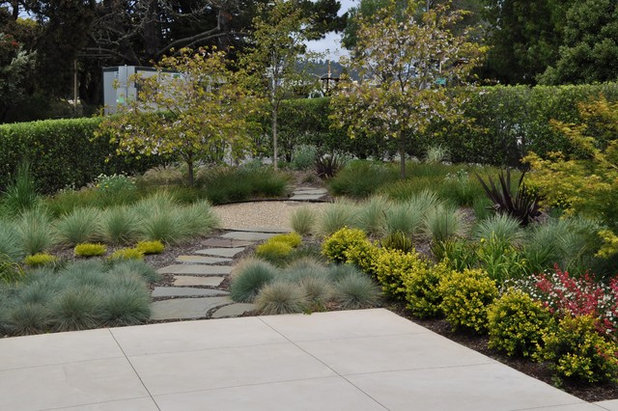
Huettl Landscape Architecture
Repetition in plants of similar forms — all circles and mounds — creates a beautiful rhythm in an entry garden. Color blocking is also used as a cool design device to draw someone from the concrete patio toward the stepping-stone path. First there's a section of blue, in the form of fescue grasses, then there's a band of green-gold boxwood (right) mirrored by a gold succulent band (left). And finally, a row of taller ornamental grasses in pure green lures you farther into this garden.
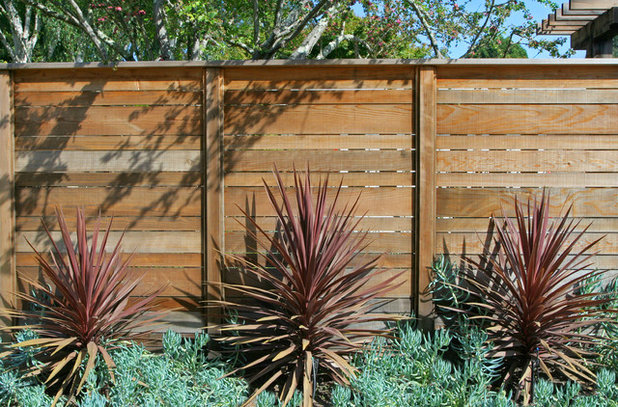
Shades Of Green Landscape Architecture
A sequence of plants and architecture is visually pleasing to the eyes, which read it as a pattern. Here, a maroon, spiky
Cordyline plant is aligned with a fence section in a rhythmic repetition that looks contemporary and balanced. Put three of them together for a thoroughly appealing installation. The silvery-blue ground cover is called
Senecio vitalis, a succulent.
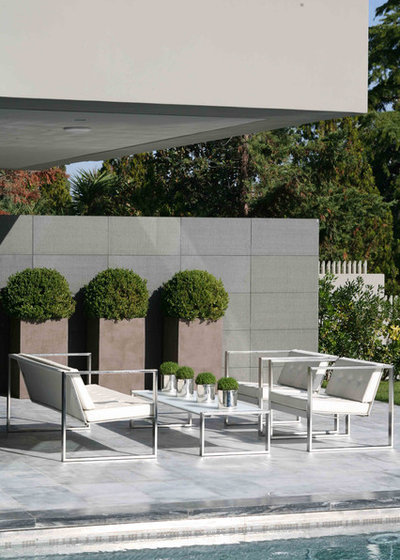
Start with a simple trio of tall, square planters. Install three clipped boxwood balls. Line them up against a screen or wall and voilà! You've created visual rhythm in a single vignette.
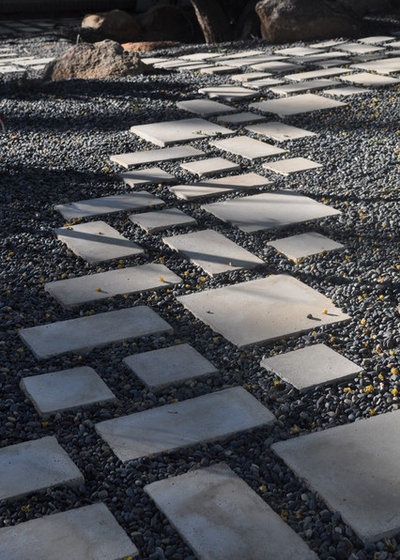
Exteriors By Chad Robert
In the 1977 book
A Pattern Language, authors Christopher Alexander, Sara Ishikawa, Murray Silverstein and others describe more than 250 "patterns" as solutions to design problems. The patterns follow design principles but are also deeply rooted in nature and human history, which is why they resonate with us.
Pattern number 247, "paving with cracks between the stones" addresses the good feeling of walking from stone to stone. Here is a modern interpretation using precast square and rectangular stepping stones in a gravel garden. I love the rhythm it creates.
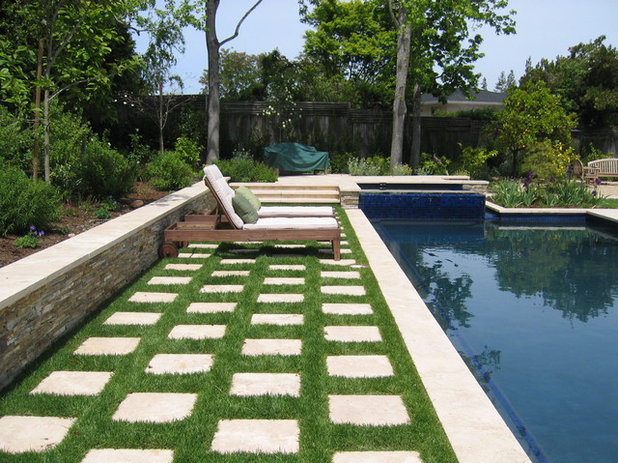
Rossington Architecture
This simple checkerboard motif is strongly rhythmic. The square concrete pavers read as a grid, thanks to the green grass seeded between each square. Moreover, this is a much cooler, permeable solution for a poolside patio than if concrete alone had been used.
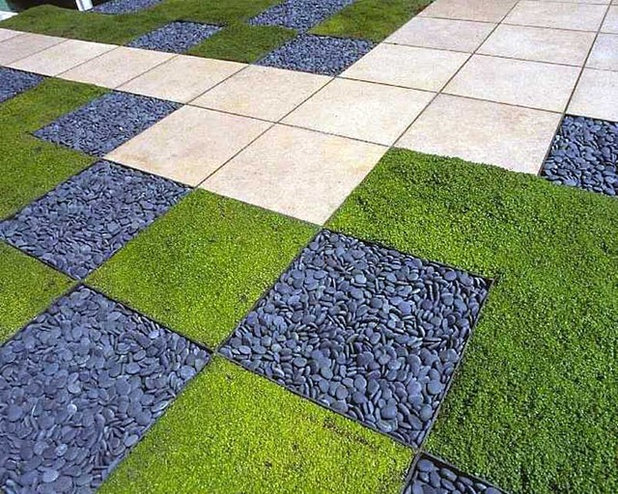
Ron Herman Landscape Architect
Thoroughly random looking, there is intention in this mixed-media design. Stone pavers slice through square pads of turf and similar-size squares of smooth slate stones. The overall design is exciting and quite arresting for its rhythm and textural interest.
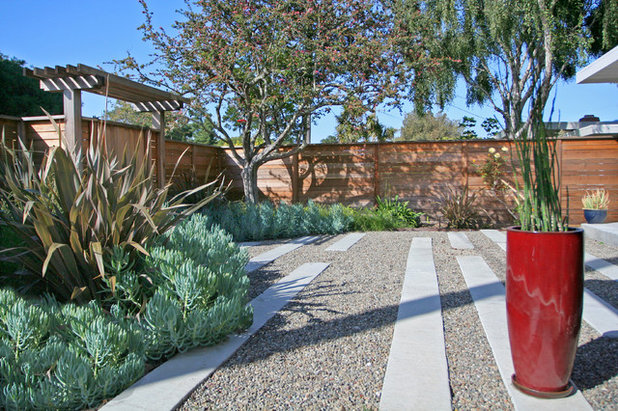
Shades Of Green Landscape Architecture
Long bands of concrete that alternate with gravel form the floor of this entry garden. There's a lot of dynamic energy in this space, as repeating bands of different textures (smooth concrete and fine-grade gravel) invoke the idea of rhythm.
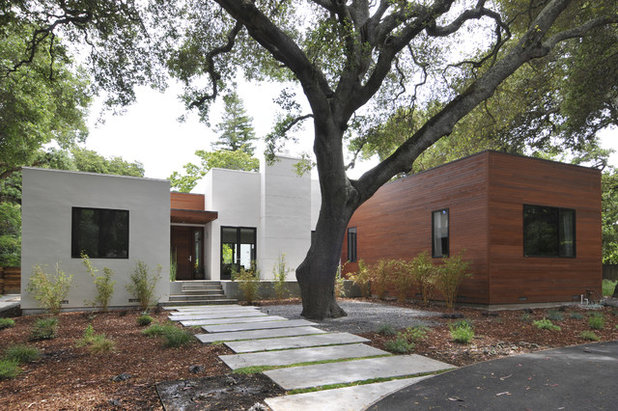
Ana Williamson Architect
Repeating bands appear in this entry garden in a slightly different way. The long, horizontal pathway gains a rhythmic vibe because each piece staggers to the left or right of center. Visually, this is exciting to view and to traverse. Ground covers planted between each band help to soften the otherwise stark installation.
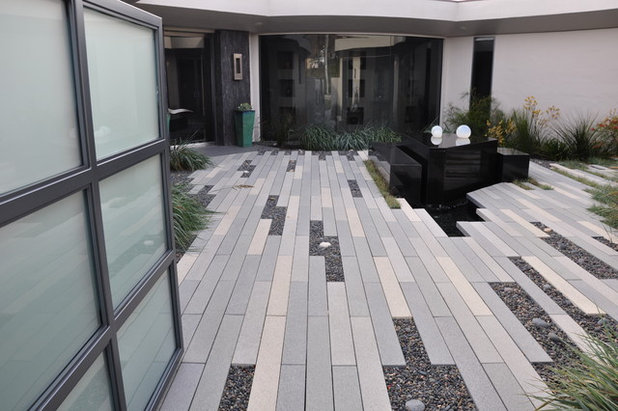
Jeffrey Gordon Smith Landscape Architecture
Here's another way rhythm plays with long, staggered bands. I love the different-colored concrete, ranging from light to dark and in between. The gravel is a fourth color, contrasting with the concrete and suggesting negative space in this patio. The concrete bands seem to be moving — is it an optical illusion?
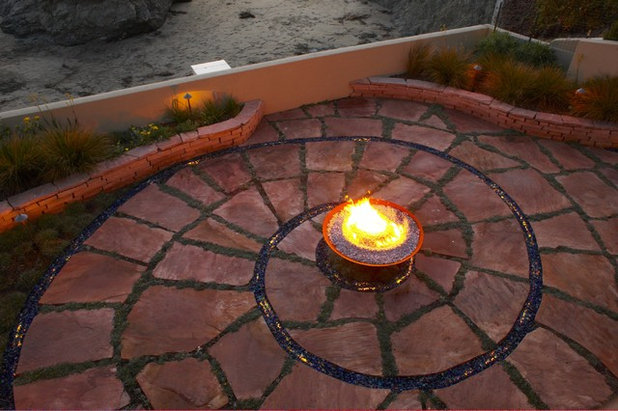
Jeffrey Gordon Smith Landscape Architecture
This lovely spiral, rendered in flagstone, seems to vibrate with its own energy. The stones form a rhythmic motion as the spiral narrows, turns in on itself and terminates at a center firepit. Where most of the spaces between the stones are planted with soft, woolly thyme, note the contrasting crushed stone used in just a single band to further emphaisze the strong spiral line in this design.
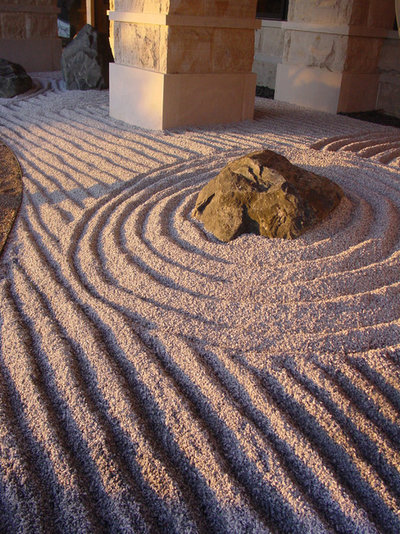
Daryl Toby - AguaFina Gardens International
Circles emanate from a mound of rocks symbolizing mountains in a quiet Zen garden. The gravel has been hand-raked to suggest the ripples on the surface of water caused by a dropped stone. The circular lines intersect other raked lines, parallel ones that have yet another sense of energy. Add the play of shadow and light and this moment in the landscape is forever powerful.
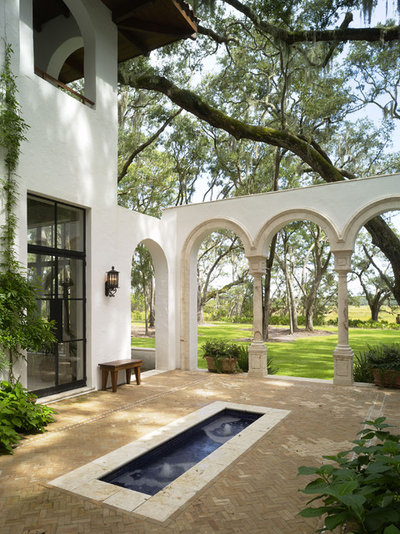
Summerour Architects
The repetitive arches in a classic Spanish-style setting feel both timeless and modern. They suggest windows through which one may peer to the distant, wilder landscape.
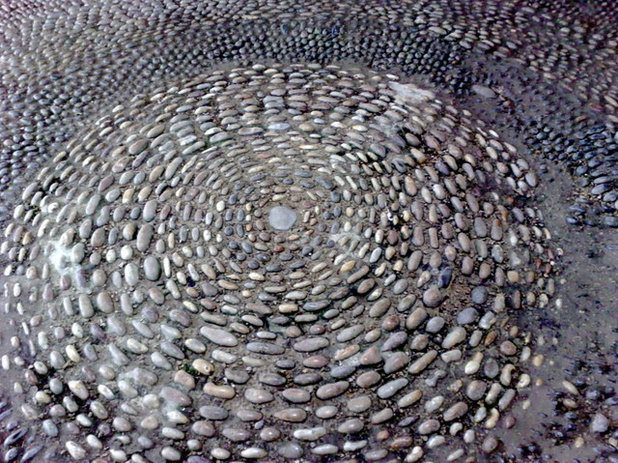
Beertje Vonk Artist
A pebble "area rug" creates a pleasing rhythm all its own. It has a flowing sensation of water, adding a kinetic mood to this patio.
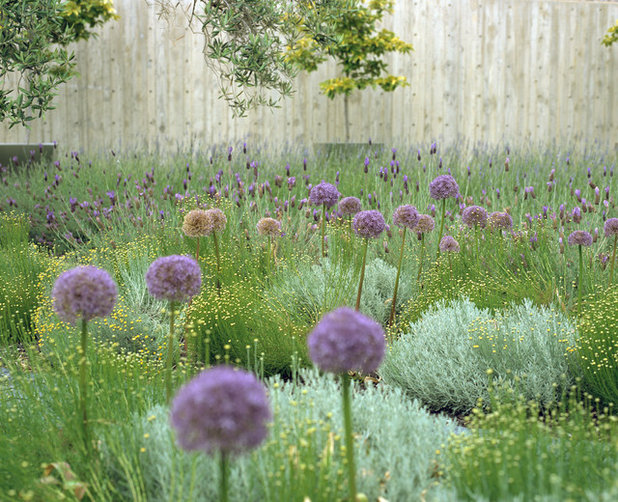
WA Design Architects
Rounded and mounded forms appear and repeat themselves throughout this dreamy meadow — a rhythmic planting scheme that is alluring and unforgettable. Santolina in shades of silver and green covers the ground, while purple alliums repeat that globe shape on taller stems. The distant wands of dark purple lavender echo the alliums, adding depth.
More:Pavers for the Perfect Patio and Path
Magical Garden Paths





